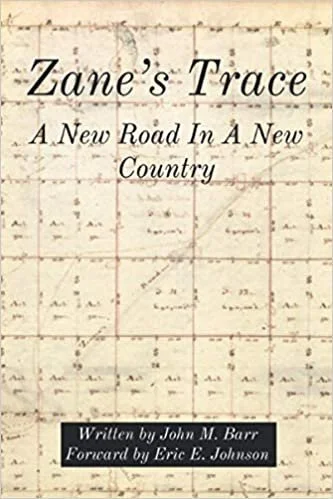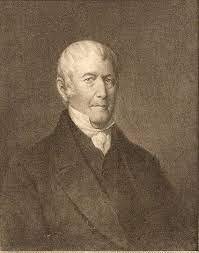Wakatomika had been settled as early as 1756 mostly by members of the Shawnee tribe, migrating to the area from western Pennsylvania. Many represented Paxinosa's band and had lived in close proximity to the Mingo, as mentioned, a mixed Iroquois group. David Zeisberger, the Moravian missionary, recorded his first visit to Wakatomika in his Schoenbrunn diary in October of 1772. Wakatomika was one large town and three or four outlying small villages located in the vicinity of present-day Dresden, Ohio, and extending up the Muskingum River from there.[1] The town and villages were composed of wooden cabin structures and surrounded by cornfields. Zeisberger found that some of the inhabitants participated in a practice of purging themselves, of evil thoughts and deeds, by drinking a mix of herbs that caused them to vomit, some to the point of damaging their health. They were open, however, to listening to David Zeisberger, and some considered converting to Christianity, as had a good number of their neighbors, the Delaware. Wakatomika was known by some fur traders as “Vomiting Town,” and “Snakestown,” named for the headmen of Wakatomika at the time, John and Thomas Snake.[2] Wakatomika was soon to find itself in a conflict it didn't start, but in which many of its warriors participated, joining friends from the Mingo tribe.
News of the Yellow Creek Massacre on April 30, 1774, spread to all the surrounding Native American villages and the Moravian settlements in early May. The Mingo in the locality vowed to kill all “white people” and were inciting the Shawnee to do the same. The Delaware, in part fearing they would be attacked if the Mingo and Shawnee went to war with the settlers, sought to protect the white traders and others in the Ohio country. Many of the Delaware villages were near Wakatomika.[3]
As John Logan prepared to avenge the deaths of his family and friends; the Delaware-Lenape Chief, Netawatwes, called for a council to be held at Wakatomika. On May 16, 1774, he led a large party of Delaware including several Indian Brothers (Moravian Christian converts) to Wakatomika to convey messages and urge peace. As the party passed Mochweissing, a Munsee Delaware town, they saw the Munsee doing war dances. Netawatwes and his party spoke sharply to them and the Munsee joined the party headed to Wakatomika. The council lasted through May 20,1774 and the Shawnee at Wakatomika stated their good intentions toward peace, but left out the Colony of Virginia.
The Shawnee and Mingo had met at a council of their own. They had decided to go to war against Virginia, but not Pennsylvania. The Shawnee, knowing of their dependence on fur traders, chose to protect them while the Mingo chose to kill fur traders. Even at this early date, Europeans in the Ohio Country were heading back towards Pittsburgh, expecting war to break out.
By May 22, 1774, war parties of Mingo and Shawnee warriors were already out, making it dangerous to travel from place to place in the Ohio country and parts of Virginia. A few days later, by June 11, John Logan and his men had killed sixteen settlers and taken others as captives. Some Cherokee warriors were also taking part in the raids on the white settlements in Virginia. Pennsylvania was calling up the militia as bands of warriors were lurking along trails and well-traveled paths, waiting to rob, kill or capture fur traders and others trying to get back to the safety of Fort Pitt, located on the site of modern-day Pittsburgh.
The Delaware, in the meantime, were serving as armed escorts for those attempting to travel to Fort Pitt. There was a great fear that the Delaware would be mistaken for hostile warriors and fired upon; this could cause the war to grow if accidents occurred. Rev. David Jones, a Baptist preacher recalled years later that he was led east by a Delaware woman, using back country trails and game paths, at a great risk to her, to lead him to safety. The Delaware and Moravian converts maintained their neutrality and often served as messengers between the factions throughout the conflict which became known as Lord Dunmore's War, named for the British Governor of Virginia.
An additional council was held on June 17,1774 at Gekelemukpechunk, (Newcomerstown) in present day Tuscarawas County. Netawatwes asked the Moravian towns to supply food for the gathering and Munsee and Mohican Indian Brothers (Christian Converts) to speak. The Delaware, Shawnee, Cherokee and Wyandot were all in attendance. Even one Caughnawaga Mohawk from Canada attended. The Catawba sent a peace belt as well. During the council Capt. White Eyes reportedly threw a peace belt before a Shawnee chief, Gischenatsi (Hard Man) who refused to pick it up.[4] The war would continue. The raids would continue.
[1] Carskadden, Jeff and James Morton. Where the Frolics and War Dances are Held. Baltimore: Gateway Press, 1997, 119-121.
[2] Ibid., 186.
[3] Butler, Scott E. Frontier History of Coshocton. Sugarcreek, Ohio: Carlisle Printing, 2020, 145.
[4] Butler, Scott E. Frontier History of Coshocton. Sugarcreek, Ohio: Carlisle Printing, 2020, 150.















